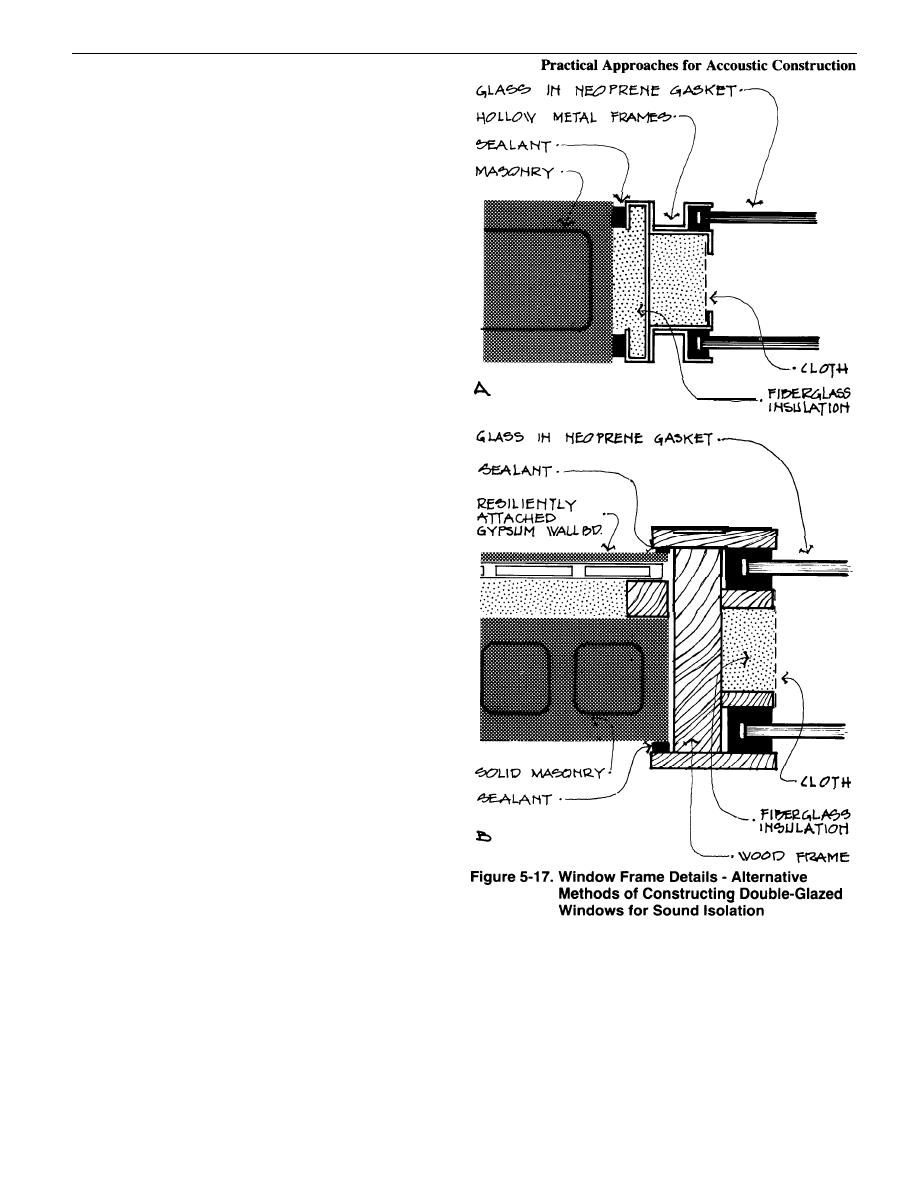
DG-1110-3-119
Design Guide: Band Training Facilities
March 1983
E. Windows
Except on unusually noisy sites (e.g., near airfields), there
is no need for special exterior glazing. Even where such
need exists, remember that an open window (for natural
ventilation) provides zero sound attenuation.
The best acoustical improvement that can be made to a
window is double glazing, with the largest possible space
between the two panes of glass--as much as the wall
thickness permits, but no less than 2 or 3 inches. The two
panes must not be rigidly connected to each other. Either
set the glass in neoprene gaskets, or, if the window is
installed in a double wall, split the frame. The frame area
between the panes should be absorptive. Performance of
the two panes is improved if they are of different
thicknesses, so that sympathetic vibrations are not trans-
mitted from one to the other.
Figure 5-17A shows a hollow metal window frame assem-
bly in a masonry wall. A metal frame packed with fiber-
glass is attached to the masonry, and sealed along its edges.
Other metal "Z" angles are assembled to form a pocket
for acoustical absorption (more fiberglass behind a cloth
screen); and to form channels to hold the glass in neo-
prene gaskets.
The construction in Figure 5-17B deals with the problem
of a double wall, resiliently attached gypsum wallboard on
masonry. This frame is shown in wood, but it can be built
in metal as well. Sealant keeps the frame from firm attach-
ment to the resilient wall (the only structural attachment
being to the masonry). Wood stops form similar conditions
-
to that described above.
Windows are no match for the isolation provided by solid
walls. Interior windows should be installed only where abso-
lutely necessary, either for supervision, checking on occu-
pancy or relief of claustrophobic conditions, or to allow
visitors in the Lobby to view functions in the music rooms.
Windows smaller than 1 foot square may be single glass,
whether in walls or doors.
The most critical window installation is between the
Recording/Audio Control Booth and the Main Rehearsal
and Large Group Practice Rooms. Split frames and dou-
ble glazing are recommended. One pane might be lami-
nated acoustical glass; but, in general, ordinary plate glass
of 1/4" to 1/2" is acceptable in this building type.
5-19


 Previous Page
Previous Page
